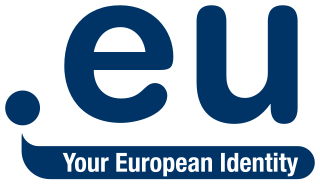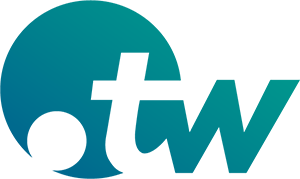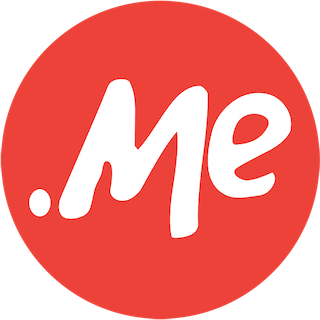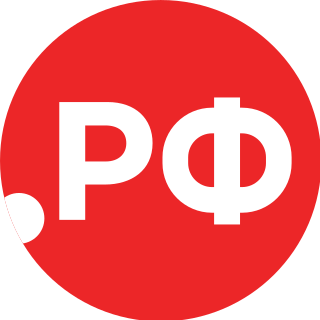
In the Internet, a domain name is a string that identifies a realm of administrative autonomy, authority or control. Domain names are often used to identify services provided through the Internet, such as websites, email services and more. Domain names are used in various networking contexts and for application-specific naming and addressing purposes. In general, a domain name identifies a network domain or an Internet Protocol (IP) resource, such as a personal computer used to access the Internet, or a server computer.
A domain name registry is a database of all domain names and the associated registrant information in the top level domains of the Domain Name System (DNS) of the Internet that enables third party entities to request administrative control of a domain name. Most registries operate on the top-level and second-level of the DNS.

The domain name .org is a generic top-level domain (gTLD) of the Domain Name System (DNS) used on the Internet. The name is truncated from 'organization'. It was one of the original domains established in 1985, and has been operated by the Public Interest Registry since 2003. The domain was originally "intended as the miscellaneous TLD for organizations that didn't fit anywhere else." It is commonly used by non-profit organizations, open-source projects, and communities, but is an open domain that can be used by anyone. The number of registered domains in .org has increased from fewer than one million in the 1990s, to ten million in 2012, and held steady between ten and eleven million since then.

.eu is the country code top-level domain (ccTLD) for the European Union (EU). Launched on 7 December 2005, the domain is available for any person, company or organization based in the European Union. This was extended to the European Economic Area in 2014, after the regulation was incorporated into the EEA Agreement, and hence is also available for any person, company or organization based in Iceland, Liechtenstein and Norway. The TLD is administered by EURid, a consortium originally consisting of the national ccTLD registry operators of Belgium, Sweden, and Italy, joined later by the national registry operator of the Czech Republic. Trademark owners were able to submit registrations through a sunrise period, in an effort to prevent cybersquatting. Full registration started on 7 April 2006.
A domain name registrar is a company that manages the reservation of Internet domain names. A domain name registrar must be accredited by a generic top-level domain (gTLD) registry or a country code top-level domain (ccTLD) registry. A registrar operates in accordance with the guidelines of the designated domain name registries.

.us is the Internet country code top-level domain (ccTLD) for the United States. It was established in early 1985. Registrants of .us domains must be U.S. citizens, residents, or organizations – or foreign entities with a presence in the United States or any territory of the United States. Most registrants in the U.S. have registered for .com, .net, .org and other gTLDs, instead of .us, which has primarily been used by state and local governments, even though private entities may also register .us domains. The domain is managed by Registry Services, LLC, a domain name registry, on behalf of the United States Department of Commerce.
.ca is the Internet country code top-level domain (ccTLD) for Canada. The domain name registry that operates it is the Canadian Internet Registration Authority (CIRA).
Domain name speculation, popular as domaining in professional jargon, is the practice of identifying and registering or acquiring generic Internet domain names as an investment with the intent of selling them later for a profit.

.se, formerly branded as .SE, is the country code top-level domain (ccTLD) for Sweden. It is operated by The Swedish Internet Foundation, but domains must be registered through one of the approved registrars. The Internet Foundation in Sweden is managed on the basis of its charter of foundation and its statutes. The Foundation is managed by a board of directors, whose decisions are executed by the executive management.

.ws is the Internet country code top-level domain (ccTLD) for Samoa. It is administered by SamoaNIC, for the Ministry of Foreign Affairs of the Government of Samoa.
Generic top-level domains (gTLDs) are one of the categories of top-level domains (TLDs) maintained by the Internet Assigned Numbers Authority (IANA) for use in the Domain Name System of the Internet. A top-level domain is the last level of every fully qualified domain name. They are called generic for historical reasons; initially, they were contrasted with country-specific TLDs in RFC 920.

.tw is the Internet country code top-level domain (ccTLD) for Taiwan. The domain name is based on the ISO 3166-1 alpha-2 country code TW. The registry is maintained by the Taiwan Network Information Center (TWNIC), a Taiwanese non-profit organization appointed by the National Communications Commission (NCC) and the Ministry of Transportation and Communication. Since 1 March 2001, TWNIC has stopped allowing itself to sign up new domain names directly, instead allowing new registration through its contracted reseller registrars. As of May 2023, there are 17 registrars.

.ru is the Latin alphabet Internet country code top-level domain (ccTLD) for Russia introduced on 7 April 1994. The Russian alphabet internationalized country code is .рф.

.so is the internet country code top-level domain (ccTLD) for Somalia. After a long absence, the .so domain was officially relaunched on November 1, 2010, by .SO Registry, which is regulated by the nation's Ministry of Posts and Telecommunications. It was launched through various accredited registrars around the world.

.ly is the Internet country code top-level domain (ccTLD) for Libya.
In the Domain Name System (DNS) hierarchy, a second-level domain is a domain that is directly below a top-level domain (TLD). For example, in example.com, example is the second-level domain of the .com TLD.
A domain hack is a domain name that suggests a word, phrase, or name when concatenating two or more adjacent levels of that domain. For example, bir.ds and examp.le, using the fictitious country-code domains .ds and .le, suggest the words birds and example respectively. In this context, the word hack denotes a clever trick, not an exploit or break-in.

.me is the Internet country code top-level domain (ccTLD) for Montenegro.

The domain name .рф is the Cyrillic country code top-level domain for the Russian Federation, in the Domain Name System of the Internet. In the Domain Name System it has the ASCII DNS name xn--p1ai. The domain accepts only Cyrillic subdomain applications, and is the first Cyrillic implementation of the Internationalizing Domain Names in Applications (IDNA) system. The domain became operational on 13 May 2010. As of 2014 it is the most used internationalized country code top-level domain, with around 900,000 domain names.
Country code top-level domains with commercial licenses are Internet country code top-level domain that have adopted a policy for worldwide commercial use.













